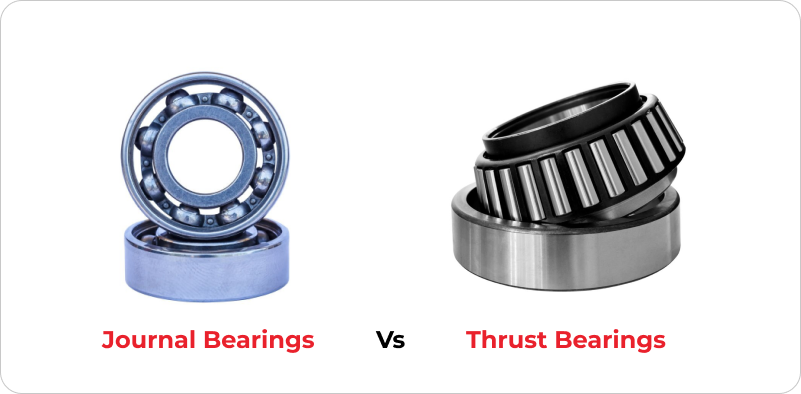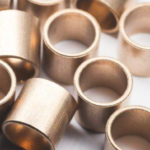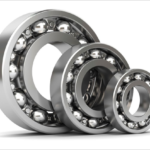Bearings are essential components in various mechanical systems, providing support and reducing friction between moving parts. Two common types of bearings are journal bearings and thrust bearings. While they share similarities, they possess unique characteristics that make them suitable for specific applications. Let’s explore the differences between journal bearings and thrust bearings, including their design features, advantages, and applications.
Journal Bearings: A Closer Look
Journal bearings are primarily used in rotary motion systems to support rotating shafts and minimize friction. They are commonly found in applications such as automotive parts and heavy-duty industrial machines.
Journal bearings are designed with high-grade steel or durable materials like bronze alloys to provide optimal support for turning axles. Depending on the application demands, there are three main types of journal bearings: split bearing, sleeve bearing, and solid bearing.
Each type has its own advantages based on the specific application requirements.
- Split type journal bearings separate into two pieces
- Sleeve type bearings have grooves around their circumference
- Solid type bearings fit over the shaft as one piece.
Journal bearings are ideal for slow-speed operations, such as pumps and compressors, where space constraints or environmental concerns make it difficult to install lubrication systems. They are also cost-effective and suitable for use in less critical settings like household appliances. Compared to other bearing technologies, journal bearings require minimal maintenance, reducing downtime and repair costs.
However, regular inspections are still necessary to identify signs of wear, such as loose screws, damaged surfaces, or worn seals. By addressing these issues promptly, users can ensure smooth operation and maintain safety standards.
Thrust Bearings: A Closer Look
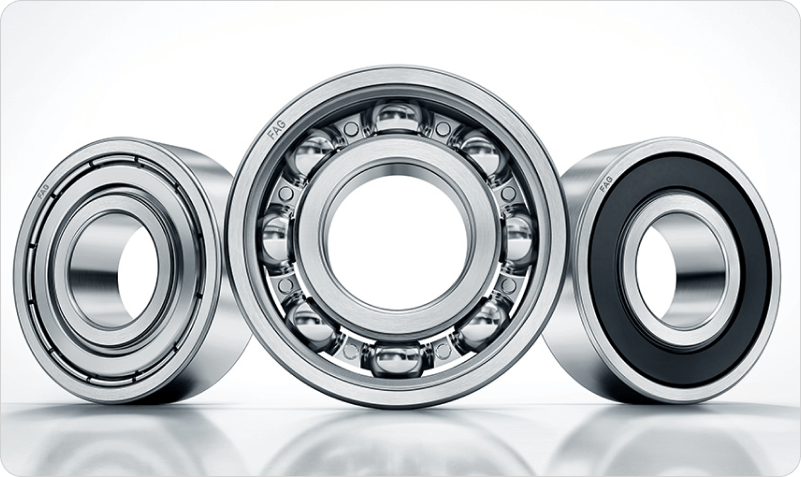
Thrust bearings, in contrast to journal bearings, are designed to handle axial loads along an axis parallel to its rotation axis. They use two identical rings with grooves that contain ball or roller elements between them. This design allows the inner ring to rotate on its axis relative to the outer ring while carrying heavy loads in one direction.
Thrust bearings are typically made from steel or alloys suitable for high temperatures and wear resistance. Special coatings can be applied to reduce friction and increase their service life. These bearings must have adequate strength and stiffness to handle the load-carrying requirements of the application.
Compared to journal bearings, thrust bearings offer higher rigidity, making them suitable for heavier loading conditions. They also require less frequent maintenance due to their lower operating speeds. Thrust bearings excel in applications where there is limited access for servicing or restricted availability of replacement parts.
Thrust bearings come in various types, including tapered roller and cylindrical type.
- Tapered roller thrust bearings are designed for higher speeds and provide excellent performance under heavy acceleration or deceleration cycles.
- Cylindrical thrust bearings are suitable for heavier loads at slower rates of rotation, ensuring maximum performance and reliability.
Read More: Journal Bearings- An Overview
Benefits of Journal Bearings: Efficiency and Durability
Journal bearings provide several benefits in many applications. They are known for their high efficiency, superior performance, and low cost.
Efficiency
Journal bearings are highly efficient in reducing friction between moving parts. Their design allows for smooth operation, minimizing energy losses and maximizing the performance of rotating machinery. By reducing friction, journal bearings contribute to increased overall system efficiency.
Durability
Journal bearings are known for their durability and long service life. They are designed to withstand heavy loads and operate reliably under demanding conditions. With proper lubrication and maintenance, journal bearings can provide consistent performance over an extended period, reducing the need for frequent replacements.
Low Cost
Compared to other types of bearings, journal bearings are cost-effective. Their simpler design and construction make them more affordable, making them a preferred choice in many applications. Additionally, their long lifespan and low maintenance requirements contribute to overall cost savings in the long run.
Excellent Load Capacity
Journal bearings offer excellent load capacity, making them suitable for a wide range of applications. They can handle both radial and thrust loads effectively, providing reliable support for rotating shafts. This versatility allows for their use in various industries and machinery types.
Operational Flexibility
One of the significant advantages of journal bearings is their ability to operate in both radial and thrust directions. This flexibility makes them suitable for diverse applications, where the load forces may vary in direction. Journal bearings can efficiently accommodate these dynamic forces, ensuring smooth and reliable operation.
Vibration Dampening
Journal bearings possess good vibration dampening characteristics. They distribute loads evenly over larger contact areas on the shaft’s surface, reducing vibrations and minimizing noise generation. This feature is particularly important in applications where noise control is critical, such as medical facilities or music studios.
Benefits of Thrust Bearings: Power Handling and Load Capacity

Thrust bearings have their own advantages when it comes to power transmission and load capacity. They are well-suited for applications requiring high loads and precision, such as industrial machinery with powerful rotating components.
High Load Capacity
Thrust bearings are specifically designed to handle high axial and radial loads. They excel in applications where heavy loads need to be supported with precision. Whether it’s in industrial machinery or automotive transmissions, thrust bearings can withstand substantial forces without compromising performance.
Superior Power Transmission
Thrust bearings offer excellent power transmission capabilities. They efficiently transfer power from one component to another, ensuring smooth and reliable operation of the system. This makes them ideal for applications that require precise power transfer, such as in precision manufacturing or high-performance machinery.
Dampening Against External Forces
Thrust bearings provide dampening capabilities against fluctuations caused by external forces. They absorb shocks and vibrations, protecting delicate components within the system. This feature is particularly important in applications where stability and precision are critical, such as in aerospace or robotics.
Energy Efficiency
Due to their cross-axis contact design, thrust bearings minimize friction and improve energy efficiency. With reduced friction, less energy is wasted as heat, resulting in improved overall system efficiency. This energy-saving characteristic is valuable in applications where energy consumption is a concern, leading to cost savings and environmental benefits.
Lower Maintenance Costs
Thrust bearings have fewer moving parts compared to journal bearings, resulting in lower maintenance costs. With a simplified design, there are fewer components that require regular inspection and replacement. This makes thrust bearings a cost-effective choice, particularly in applications where frequent maintenance or part replacements are challenging or costly.
Recommended Reading: An Ultimate Guide on Thrust Bearing
Design Considerations for Journal Bearings: Size, Load Capacity, and Lubrication
Size: When designing journal bearings, it is important to consider the size of the bearing. The diameter of the journal bearing should typically exceed the diameter of the shaft by at least 10% to prevent contact between them during operation.
Load Capacity: The selected journal bearing should have the capacity to support the required loads without excessive friction or premature failure. Proper load capacity ensures optimal performance and longevity of the bearing.
Clearances: Adequate clearances between the bearing and the shaft must be maintained to ensure optimum performance. These clearances allow for proper lubrication and prevent unwanted contact and friction between the components.
Material Selection: Both the shaft and the bearing components should have matching hardness and strength characteristics to prevent mismatched wear over time. Choosing compatible materials ensures longevity and performance of the journal bearing.
Lubrication: Lubrication is crucial for the long-term reliability of journal bearings. It prevents metal-to-metal contact, reduces friction, and protects against wear. Proper lubrication ensures smooth operation and extends the lifespan of the bearing.
Design Considerations for Thrust Bearings: Load Capacity, Lubrication, and Maintenance
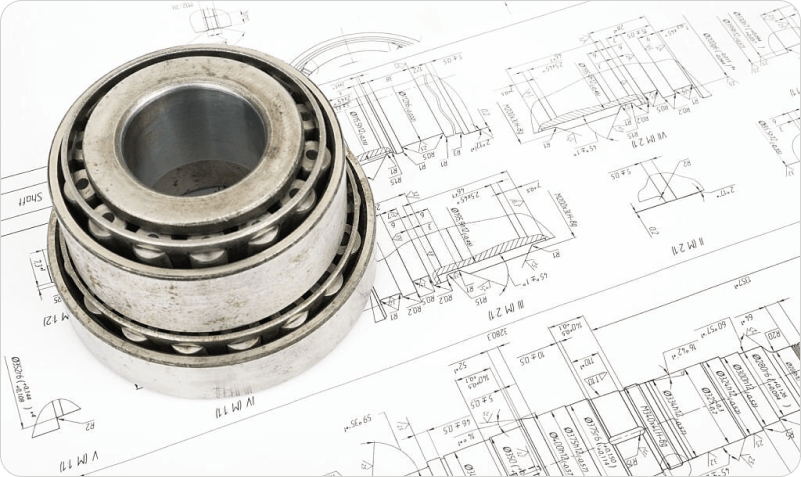
Design considerations for thrust bearings differ from those of journal bearings. Load capacity is a primary consideration, determining if the bearing can handle the expected loads and the space required for installation. The construction of the thrust bearing, along with material compatibility, is also crucial.
Lubrication selection is vital for reducing friction, protecting against wear and corrosion, and ensuring proper functioning. Regular maintenance checks are essential for maintaining thrust bearing performance and safety. Monitoring operating temperatures helps prevent damage caused by high temperatures, and cooling systems may be necessary to maintain acceptable operating levels.
Proper design considerations, including load capacity, lubrication, and maintenance, are key to ensuring the longevity and optimal performance of thrust bearings.
Maintenance Requirements for Journal Bearings: Lubrication, Inspection, Temperature Control, and Wear Monitoring
Load Capacity: The ability of the thrust bearing to handle the expected loads is a primary concern. It is crucial to determine if the bearing can withstand the anticipated loads and if there is sufficient space available for its installation.
Lubrication: Proper lubrication selection is essential for reducing friction, protecting against wear and corrosion, and ensuring the smooth functioning of the thrust bearing. The right lubricant should be chosen based on factors such as temperature range, viscosity, and compatibility with other components in the system.
Maintenance: Regular maintenance checks are necessary to ensure the continued performance and safety of thrust bearings. Periodic inspections should be conducted to identify any signs of wear, damage, or abnormalities. Timely maintenance and repair can prevent issues from escalating and ensure the longevity of the bearing.
Operating Temperatures: Monitoring operating temperatures is crucial to prevent damage caused by high temperatures. If necessary, cooling systems may need to be implemented to maintain acceptable operating levels and protect the thrust bearing from overheating.
Maintenance Requirements for Thrust Bearings: Scheduled Inspections, Lubrication, and Cleaning
Maintaining thrust bearings requires regular inspections, lubrication, and cleaning. Following a maintenance schedule is crucial to keep the bearing in peak performance condition. Inspections should occur at regular intervals, with increased frequency for bearings in high-temperature environments. During inspections, check for wear, damage, and tighten all bolts and components according to manufacturer specifications.
Proper lubrication and cleaning are vital for optimal thrust bearing operation. Use recommended lubricants and cleaners approved by the manufacturer to prevent problems. Replace worn-out seals or other components as needed. Before installation, perform preventative measures such as applying grease on the outer surfaces and inspect each part closely for defects.
By following maintenance requirements carefully, thrust bearings can maintain their performance and reliability, minimizing unexpected breakdowns or malfunctions.
Cost Comparison: Initial Investment and Long-Term Cost
The cost comparison between journal bearings and thrust bearings involves both the initial investment and long-term costs. Journal bearings tend to have a higher initial cost due to their complex design. However, they require less maintenance over time and have a longer lifespan compared to most thrust bearings.
Thrust bearings are generally cheaper upfront due to their simpler construction. However, they may need to be replaced sooner due to wear and tear from regular use.
When deciding between the two types, it’s crucial to consider the total cost difference. Factors such as installation costs, maintenance requirements, and expected lifespan should be taken into account. Depending on your priorities, such as durability or initial investment, you can make an informed decision that best suits your needs.
Choose the Right Bearing & Bushings Manufacturers
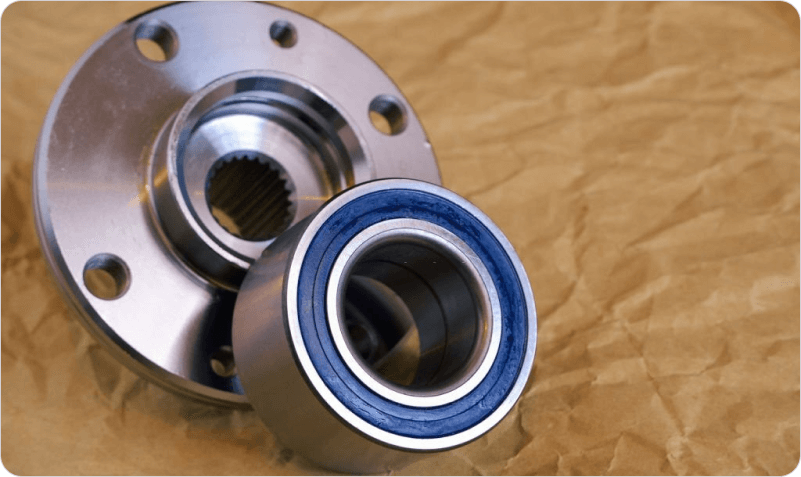
When it comes to understanding the differences between journal bearings and thrust bearings, it becomes clear that each type has its own unique characteristics and advantages. Proper consideration of factors such as load capacity, operating speed, size availability, and specific application requirements is crucial for making an informed decision.
For high-quality bearings that meet industry standards and provide reliable performance, Hi-bond stands as India’s leading bearing manufacturers. Hi-bond offers a wide range of bearing solutions tailored to various industries and applications.
Our bearings and bushings products undergo rigorous quality control processes, ensuring durability, performance, and long-term reliability.
Remember, selecting the right bearings and bearing manufacturing company is crucial for optimal performance, reduced downtime, and overall productivity. With Hi-bond as your bearing manufacturing company, you can be assured of high-quality products that meet your specific requirements, helping you achieve success in your applications.
FAQs:
Q: What is the difference between journal bearing and thrust bearing?
A: Journal bearings are primarily used for rotary motion systems and provide support to rotating shafts while reducing friction. On the other hand, thrust bearings are designed to absorb axial loads applied parallel to their rotation axis, making them ideal for linear applications.
Q: What is thrust and journal bearing?
A: Thrust bearings are designed to handle axial loads, while journal bearings are used to support rotating shafts and reduce friction.
Q: Why is journal bearing used?
A: Journal bearings are used in rotary motion systems to provide support for rotating shafts while minimizing friction between them and the surrounding environment. They help reduce wear and ensure smooth operation.
Q: What is a thrust bearing used for?
A: Thrust bearings are used to absorb axial loads applied parallel to their rotation axis. They are commonly used in applications where linear force needs to be supported, such as elevators or wind turbines.
Q: What is a thrust bearing also known as?
A: A thrust bearing is also known as a thrust washer or axial bearing, reflecting its purpose of handling axial loads.

